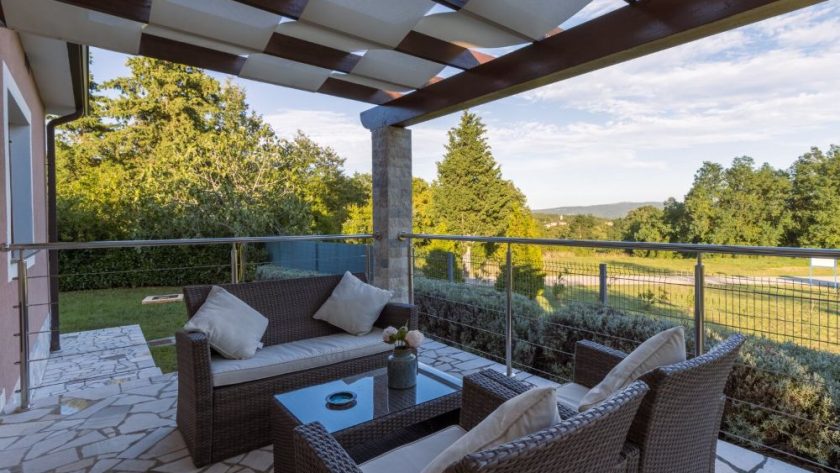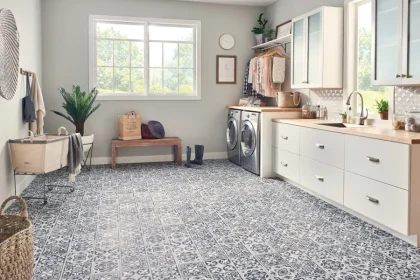Innovative Landscape Trends to Elevate Your Outdoors
In recent years, landscape design has evolved into an innovative realm where nature and technology converge, bringing forth transformative outdoor environments. One of the most compelling trends in landscaping is the concept of biophilic design, which prioritizes natural elements and encourages a connection with nature. This can manifest in various forms, from vertical gardens and living walls that provide the dual benefit of aesthetic appeal and air purification, to the integration of water features such as streams or ponds that assist in the creation of peaceful atmospheres.
Abilene landscape services are increasingly embracing these trends, offering homeowners creative solutions that reflect both beauty and ecological responsibility. The resurgence of native plant landscaping, for instance, is not only visually appealing but also environmentally advantageous. By incorporating plants indigenous to the Abilene area, these services help ensure that gardens are more resilient against local pests and diseases while supporting native wildlife. This approach often simplifies maintenance and conserves water, aligning with the region’s growing emphasis on sustainability.
Moreover, outdoor spaces are now being viewed as seamless extensions of the home. With the help of Abilene landscape services, homeowners can integrate multifunctional features such as fire pits, outdoor kitchens, and cozy seating areas that encourage both social gatherings and quiet moments in nature. As the boundaries between indoor and outdoor living continue to fade, thoughtful landscape design becomes not just a luxury, but a vital part of contemporary living.
Sustainable Landscaping: Merging Beauty with Eco-Responsibility
Sustainable landscaping focuses on creating beautiful outdoor spaces that also contribute positively to the environment. This design philosophy emphasizes responsible resource use, minimizes waste, and promotes biodiversity. Key practices include designing with drought-resistant plants, implementing rain gardens, and using permeable pavers that reduce runoff and increase groundwater recharge.
For instance, xeriscaping is an effective method employed in arid regions that focuses on reducing water use through thoughtful plant selection and landscape design. By utilizing native and drought-tolerant species, homeowners can cultivate a visually appealing garden that thrives in the local climate while drastically reducing irrigation costs and effort. Additionally, incorporating organic gardening practices, such as composting and natural pest control, helps in maintaining the landscape without the harmful effects of synthetic chemicals.
Another sustainable practice is the use of reclaimed materials in hardscaping elements, such as recycled bricks or stones, which not only adds character but also reduces waste. Incorporating wildlife habitats, like butterflies gardens and birdhouses, further enhances biodiversity, reinforcing the idea that beautiful landscapes can coexist with nature’s needs. Ultimately, your outdoor space can reflect personal style and an unwavering commitment to environmental sustainability.
Color Psychology in Gardens: How Plants Influence Mood
The impact of color in landscapes extends far beyond mere aesthetics; it plays a critical role in influencing emotions and setting the overall mood of a space. Utilizing color psychology in your garden design can create feelings of tranquility, happiness, or energy, transforming the way you interact with your outdoor environment. For example, cool shades like blue and green often elicit feelings of calm and relaxation, making them ideal for spaces meant for rest and respite.
In contrast, warm colors such as reds, oranges, and yellows evoke energy and vibrancy, ideal for entertainment spaces or gardens meant to inspire activity. Strategically positioning these colors throughout your garden can enhance the natural flow and create distinct atmospheres in different areas, such as a serene retreat contrasted by a lively social gathering space. This thoughtfulness in design helps to create a cohesive experience for garden visitors, promoting emotional balance and well-being.
Additionally, seasonal changes in plant colors, as observed with flowering species, can enhance the visual narrative of your landscape throughout the year, providing an ever-evolving backdrop for outdoor activities. The key is to curate a palette that resonates with your personal aesthetic while considering the psychological effects colors can impart. Engaging with a landscape designer skilled in color theory can significantly enhance your outdoor experience, leading to a green paradise that is both beautiful and emotionally fulfilling.
Transformative Hardscaping: From Patios to Pathways
Creating Captivating Outdoor Living Spaces: Design Essentials
Hardscaping serves as the foundational backbone of any landscape design, creating usable outdoor spaces that extend the functionality of your home. From elegant patios to winding pathways, the right hardscaping elements can create a smooth transition from indoor spaces to the outdoor realms. When designing these areas, it’s essential to consider the flow of movement, accessibility, and the overall aesthetic style that resonates with your home.
A well-designed patio, constructed with durable and attractive materials such as natural stone or pavers, can serve as the central hub for family and friends to gather. Incorporating built-in seating, outdoor lighting, and fire features enhances its usability and charm, inviting all to enjoy evenings under the stars. Furthermore, integrating planting beds or vertical gardens around the patio can soften the hard surfaces, making the area feel more inviting and connected to nature.
Pathways are equally significant, acting as guides that lead people through your outdoor space while also contributing to its overall aesthetic. Using materials such as crushed gravel, flagstone, or even wood decking can create a natural feel that harmonizes with your garden. When thoughtfully designed, pathways not only provide practical access but also encourage exploration and enjoyment of the surrounding landscape. Consequently, investing in quality hardscaping that reflects your style will ultimately transform your outdoor areas into captivating spaces tailored to your lifestyle.
Functional and Aesthetic Hardscaping Materials: What to Choose
The selection of hardscaping materials is paramount in ensuring both functionality and aesthetic appeal in your outdoor space. When choosing materials, consider factors such as durability, maintenance, and compatibility with the local climate. For instance, natural stones like granite, slate, and limestone offer timeless beauty and durability, making them ideal for patios and walkways.
Concrete has also become a popular choice in modern landscaping due to its versatility and affordability. It can be poured, stamped, or colored in numerous patterns to mimic more expensive materials such as brick or stone. Additionally, eco-friendly options like pervious concrete can help manage stormwater runoff, aligning with the principles of sustainable landscaping.
Wooden structures, such as decks and fences made from pressure-treated wood or composite materials, provide warmth and richness to the design. On the other hand, metal accents, including wrought iron railings or aluminum planters, can add a contemporary contrast to soft plantings. The key is to select materials that complement the overall theme of your landscape while ensuring longevity and ease of maintenance to create a harmonious balance.
Enhancing Accessibility: Walkways That Welcome Everyone
Accessibility plays a crucial role in landscape design, as it ensures that everyone can enjoy your outdoor space, regardless of mobility challenges. Designing inclusive walkways that are wide enough for wheelchairs and scooters is fundamental. Ideally, these pathways should be constructed with non-slip materials to ensure safety, particularly in wet weather.
Incorporating gentle slopes and proper grading can enhance ease of access, avoiding steep inclines that could deter use. Additionally, implementing visual cues such as contrasting colors or textures can assist those with visual impairments in navigating the space. Integrating rest areas with comfortable seating along longer pathways offers a place for individuals to take a break and appreciate the landscape, fostering a sense of community. By prioritizing accessibility in your landscape planning and incorporating thoughtful design features, you simultaneously enhance the usability of your space while promoting inclusivity, creating a welcoming environment for everyone.
Elevating Aesthetics: The Magic of Lighting in Landscaping
Layering Outdoor Lighting: Techniques to Illuminate Your Landscape
Proper lighting plays a transformative role in landscape design, extending the usability of outdoor spaces long after the sun sets. Utilizing a layered lighting approach, which includes ambient, task, and accent lighting, allows you to create vibrant displays that shift the mood of your garden throughout the evening. Ambient lighting, typically the primary source, serves to provide overall illumination and safety, using soft fixtures to warm the atmosphere.
Task lighting, as the name suggests, focuses on specific areas where activities take place, such as illuminating outdoor kitchens or dining spaces. Fixtures like pendant lights and sconces can enhance these functional zones. Meanwhile, accent lighting is used creatively to highlight particular features such as trees, sculptures, or architectural details, creating visual interest and drama. Together, these lighting elements work harmoniously to create a breathtaking nocturnal landscape that showcases architectural integrity and natural beauty.
Moreover, advancements in LED technology have made it easier than ever to incorporate energy-efficient lighting solutions, providing a longer lifespan and reduced electrical costs. Incorporating motion sensors and timers not only enhances functionality but also improves energy management, underscoring sustainable practices in outdoor spaces. The careful arrangement of lighting can significantly alter the way one experiences a landscape, making it an essential consideration for any outdoor design project.
Highlighting Features: Spotlighting Your Garden’s Best Assets
Strategically positioned lighting can accentuate the inherent beauty of your garden, drawing attention to its best features. Use spotlighting techniques to serve as focal points, whether that be a majestic tree, a beautiful blooming flower, or an elaborate water feature. The right placement is crucial: Fixtures should be directed to highlight textures and colors, creating shadows that add depth and dimensionality to the landscape.
Backlighting can be particularly effective in creating silhouettes that emphasize the shape of plants or trees, while uplighting can provide drama to taller elements, making the environment feel more dynamic. Furthermore, creating a visual path with soft lighting along walkways not only guides visitors safely but also invites exploration, enhancing the overall experience of your outdoor space.
Incorporating lighting features like lanterns, fairy lights, or illuminated planters can add whimsy and charm, transforming ordinary spaces into magical retreats. By taking the time to design a lighting plan that highlights your garden’s unique attributes, you create a captivating environment that invites admiration and serves as a backdrop for gatherings under the stars.
Energy-Efficient Lighting Solutions: Shine Brightly, Go Green
As environmental consciousness becomes increasingly important, selecting energy-efficient lighting options not only elevates your landscape design but also aligns with eco-responsibility. LED lighting solutions are notably more energy-efficient than traditional incandescent bulbs, consuming up to 75% less energy and lasting up to 25 times longer. This durability minimizes both replacement costs and waste, making LEDs an intelligent choice for outdoor spaces.
Moreover, integrating solar-powered fixtures allows for off-grid lighting solutions that harness natural sunlight during the day to illuminate your landscape at night. These fixtures require minimal maintenance while providing bright illumination, making them ideal for areas where traditional electrical lighting may be challenging to install or costly. Additionally, utilizing smart technology, such as automated controls and app-based timers, enhances energy management, allowing homeowners to optimize lighting based on needs and preferences.
In summary, energy-efficient lighting solutions not only reduce your carbon footprint but also create beautifully lit landscapes that can be adjusted and customized to fit your lifestyle. By investing in innovative lighting design, you’ll illuminate your outdoor spaces in a way that complements the surrounding beauty while demonstrating a commitment to environmental sustainability.
Seasonal Landscape Maintenance: Keeping Your Outdoor Oasis Thriving
Spring Awakening: Preparing Your Garden for Blooming Season
As winter releases its grip, spring emerges as the perfect opportunity to breathe life back into your garden. Comprehensive spring maintenance should begin with a thorough assessment of the landscape. Start by cleaning up any debris that may have accumulated over the winter months, such as fallen branches or dried foliage, as this helps to prepare the soil and allows air and light to penetrate more effectively.
Next, perform soil tests to determine its health and fertility. Based on the results, amend the soil as necessary with organic matter or fertilizers to support healthy growth. Early spring is also the ideal time to prune shrubs and trees that require shape or thinning to encourage healthy growth. This process not only elevates aesthetics but also bolsters plant vigor, yielding vibrant blooms later in the season.
As temperatures rise, consider dividing perennial plants, ensuring that they have ample space to thrive, and begin sowing seeds or installing new plantings. Incorporating mulching techniques helps retain moisture and suppress weed growth, setting the stage for a lush and flourishing garden. By implementing these essential spring maintenance practices, homeowners can prepare their outdoor spaces for a successful blooming season.
Winter Preparations: Ensuring Survival Through Cold Months
Proper winter preparation is critical for preserving the vitality of your landscape during the harsh cold months. Begin by insulating vulnerable plants with protective blankets of mulch, straw, or burlap to guard against temperature fluctuations and frost damage. Additionally, container plants should be relocated to sheltered locations or wrapped in protective materials to minimize exposure to freezing temperatures.
Winter is also an excellent time to assess your garden’s health and plan for future enhancements. Inspect existing plants for diseases or pest infestations and take measures to remedy these issues before the growing season resumes. It is also important to remove any dead or diseased plant material before snow arrives to prevent the spread of pathogens.
As part of favorable winter preparation, consider changing the landscape design to reflect seasonal aesthetics. Introducing evergreen plants or winter-blooming annuals can keep the landscape visually engaging throughout the cold season. Planning during winter helps ensure a seamless transition to spring, ultimately contributing to the resilience and longevity of your outdoor sanctuary.
Year-Round Care: Essential Tips for Continuous Landscape Health
Seasonal landscape maintenance is essential in guaranteeing the year-round health of your outdoor space. A regular maintenance schedule should incorporate routine tasks such as watering, pruning, fertilizing, and pest control to maintain plant health. Consider integrating a seasonal planting calendar to determine when to plant, transplant, or divide flowers and shrubs for optimal growth.
In addition, investing in proper irrigation systems can promote eco-friendly practices by conserving water while guaranteeing that plants receive adequate moisture. Techniques such as drip irrigation or the installation of rain barrels can significantly reduce water waste and enhance plant health.
Lastly, engaging with a professional landscape service for seasonal maintenance can ensure that your outdoor environment receives expert attention and care. These professionals can provide valuable insights tailored to your unique landscape and help identify opportunities for improvements that keep your garden thriving across all seasons. By embracing diligent and thoughtful landscape care, you can cultivate an outdoor oasis that resonates with beauty and vitality, enriching your life year-round.





